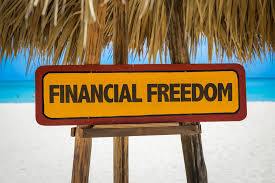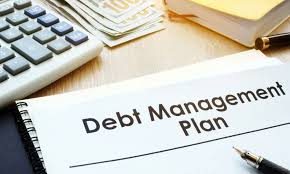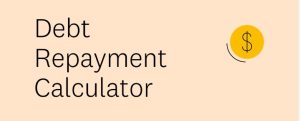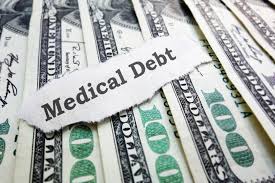As a freelancer in the bustling gig economy, achieving debt freedom might seem like scaling a mountain with constantly shifting terrain.
According to recent data, over 40% of gig workers carry significant debt, often struggling with irregular income patterns that make traditional debt repayment advice feel inadequate.
Whether you’re a rideshare driver, freelance writer, or independent consultant, your path to financial independence requires a uniquely tailored approach that acknowledges the dynamic nature of your income.
The conventional wisdom about debt repayment often assumes a steady, predictable paycheck – something most gig workers can only dream about.
But here’s the truth: achieving debt freedom in the gig economy isn’t just possible; it’s absolutely achievable with the right strategy and mindset.
This comprehensive guide will show you exactly how to navigate this journey while managing the unique challenges of freelance work.
Skale Money Key Takeaways
Before diving deep into the strategies, here are the essential points you’ll learn:
- A flexible debt repayment system that adapts to variable income
- Strategic tax management while tackling debt
- Building robust financial safety nets
- Maximizing income potential without burning out
- Technology tools to streamline debt management
- Creating sustainable financial habits
Expected Timeline: With dedicated implementation of these strategies, most gig workers can make significant progress toward debt freedom within 18-36 months, depending on debt load and income potential.
Table of Contents
Understanding Your Gig Economy Income Pattern
The foundation of achieving debt freedom in the gig economy starts with understanding your unique income pattern. Unlike traditional employees, your income likely resembles a roller coaster rather than a straight line.
This variability isn’t a weakness – it’s simply a characteristic that requires specific management strategies.
Key components to track:
- Base income (your minimum reliable monthly earnings)
- Peak season patterns and opportunities
- Client payment cycles and their impact on cash flow
- Industry-specific trends affecting your income
Income Tracking Table:
| Month Type | Expected Income Range | Buffer Needed |
| Peak Months | 100-150% of average | 20% |
| Regular Months | 70-100% of average | 30% |
| Slow Months | 40-70% of average | 50% |
Creating a Flexible Debt Repayment System
The key to achieving debt freedom as a gig worker lies in creating a repayment system that breathes with your income fluctuations. Traditional fixed-payment plans often fail because they don’t account for the variable nature of freelance income.
Essential components of your flexible system:
- Percentage-based payments that scale with income
- Prioritized debt ranking based on interest rates and terms
- Minimum payment thresholds for lean months
- Accelerated payment plans for high-income periods
Payment Allocation Strategy:
| Income Level | Debt Payment | Savings | Living Expenses |
| Below Average | 20% | 10% | 70% |
| Average | 35% | 15% | 50% |
| Above Average | 50% | 20% | 30% |
Managing Self-Employment Taxes While Tackling Debt
One of the biggest obstacles to achieving debt freedom in the gig economy is managing self-employment taxes. Poor tax planning can create new debt even as you’re working to eliminate existing obligations.
Key tax management strategies:
- Set aside 25-30% of gross income for taxes
- Maintain separate accounts for tax savings
- Track all business expenses meticulously
- Make quarterly estimated tax payments
- Consider professional tax preparation assistance
Tax Savings Schedule:
- Weekly: Review and categorize expenses
- Monthly: Reconcile tax savings account
- Quarterly: Make estimated tax payments
- Annually: Professional tax review and planning
Building Financial Safety Nets
Achieving debt freedom requires protection against income volatility. Your financial safety nets need to be more robust than those of traditional employees.
Essential safety net components:
- Income smoothing account (1 month of expenses)
- Professional emergency fund (3-6 months of expenses)
- Health insurance coverage
- Professional liability insurance
- Business continuity fund
Emergency Fund Targets:
| Category | Minimum Target | Optimal Target |
| Income Smoothing | $3,000 | $5,000 |
| Emergency Fund | $10,000 | $20,000 |
| Business Continuity | $2,000 | $5,000 |
Maximizing Income Potential
A crucial aspect of achieving debt freedom in the gig economy is maximizing your earning potential without burning out.
Income optimization strategies:
- Regular rate reviews and increases
- Skill development in high-demand areas
- Strategic client portfolio management
- Development of passive income streams
- Identification of high-value services
Rate Increase Guidelines:
- New clients: Premium rates (15-20% higher)
- Existing clients: Annual increases (5-10%)
- Special projects: Rush fee premiums (25-50%)
- Seasonal demand: Peak pricing adjustments
Technology and Tools for Debt Management
Leveraging technology is crucial for achieving debt freedom efficiently in the gig economy.
Essential tools and software:
- Income tracking: Mint, YNAB, or QuickBooks Self-Employed
- Invoice management: FreshBooks or Wave
- Expense tracking: Expensify or Receipt Bank
- Debt payoff calculators: Undebt.it or Debt Payoff Planner
Tool Recommendations:
| Purpose | Free Option | Paid Option | Key Features |
| Budgeting | Mint | YNAB | Variable income planning |
| Invoicing | Wave | FreshBooks | Payment reminders |
| Expense Tracking | Receipt Bank | Expensify | Real-time categorization |
Creating Sustainable Financial Habits
Long-term success in achieving debt freedom requires developing sustainable financial habits that work with your gig economy lifestyle.
Essential habits to develop:
- Weekly financial reviews and updates
- Monthly income and expense analysis
- Quarterly goal assessments and adjustments
- Annual financial planning and strategy sessions
- Regular client relationship management
- Continuous professional development
Dealing with Setbacks and Challenges
The path to achieving debt freedom in the gig economy isn’t always smooth. Preparing for common challenges is essential.
Recovery strategies for common setbacks:
- Client loss: Maintain a prospect pipeline
- Market downturns: Diversify service offerings
- Health issues: Maintain disability insurance
- Seasonal slowdowns: Build additional income streams
Conclusion
Achieving debt freedom in the gig economy requires a unique approach that embraces income variability while maintaining steady progress toward your financial goals.
By implementing the strategies outlined in this guide – from creating flexible repayment systems to building robust safety nets and maximizing your income potential – you can create a sustainable path to debt freedom that works with, not against, your freelance lifestyle.
Remember that this journey is a marathon, not a sprint. Focus on implementing one strategy at a time, and celebrate your progress along the way. Your path to debt freedom may look different from others, but with dedication and the right approach, it’s absolutely achievable.
Frequently Asked Questions
How long does it typically take to achieve debt freedom in the gig economy?
The timeline varies significantly based on debt load, income potential, and consistency in applying these strategies. Most freelancers see significant progress within 18-36 months.
Should I take on more clients while paying off debt?
Focus on optimizing current client relationships and rates first. Take on additional clients only if you can maintain quality and avoid burnout.
How do I handle unexpected large expenses during debt repayment?
This is where your tiered emergency fund system comes into play. Use your income smoothing account for smaller emergencies and your main emergency fund for larger issues.
What’s the best way to prioritize multiple types of debt?
Generally, prioritize high-interest debt first while maintaining minimum payments on other debts. However, consider cash flow impact when dealing with variable income.
How do I maintain work-life balance while accelerating debt payoff?
Focus on increasing your effective hourly rate rather than working more hours. This might mean developing higher-value services or improving efficiency.
Should I invest while paying off debt?
Maintain any employer match if you have traditional employment on the side, but focus primarily on building your emergency funds and paying off high-interest debt.
How do I handle client payment delays during debt repayment?
Your income smoothing account should help manage delays. Also, implement clear payment terms and consider requiring deposits for new clients.
What are the signs I should adjust my debt payoff strategy?
Watch for signs of burnout, consistently missing targets, or feeling overly restricted. Your strategy should be challenging but sustainable.
![]()




